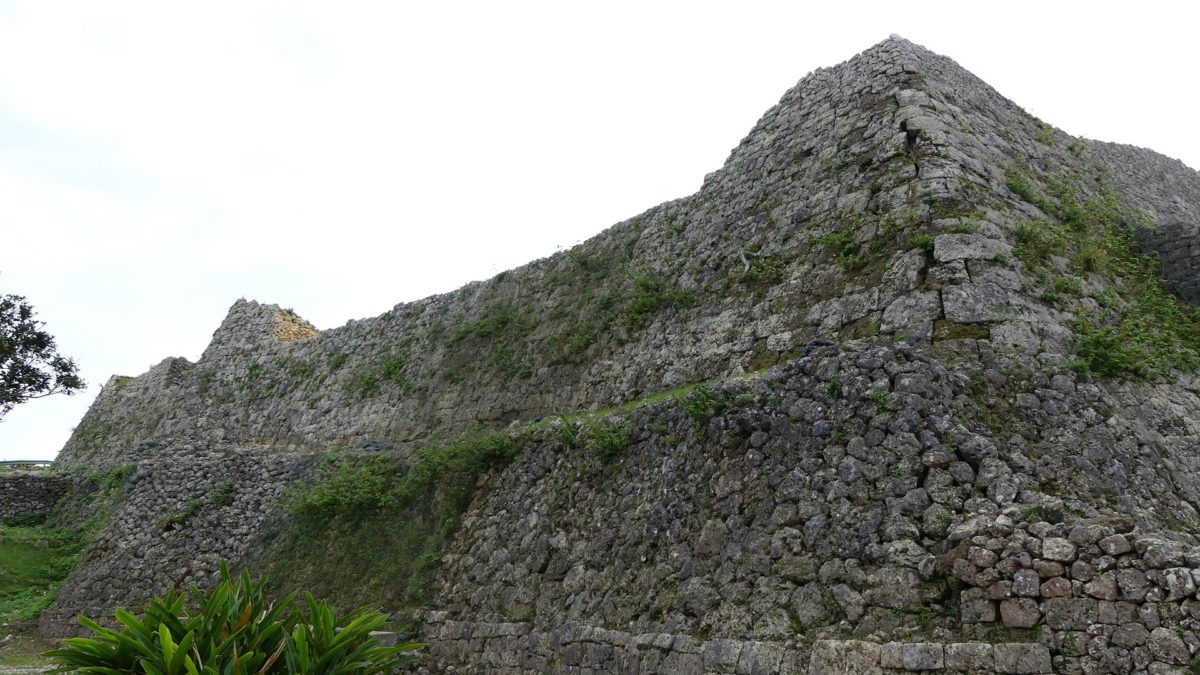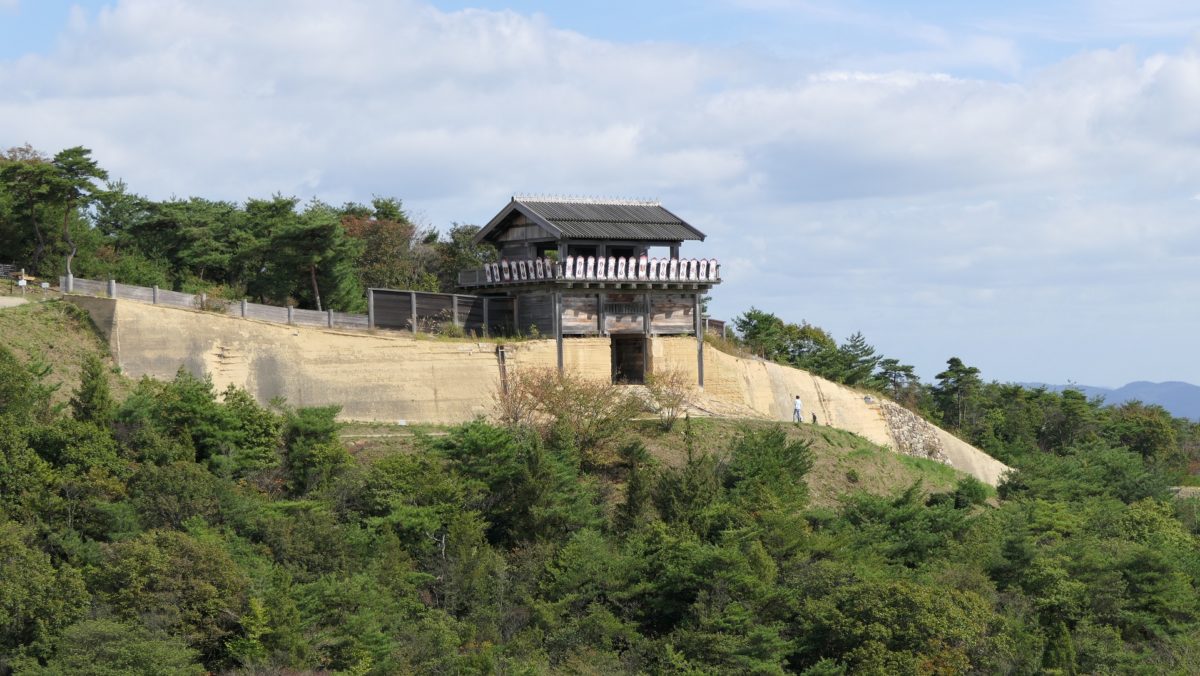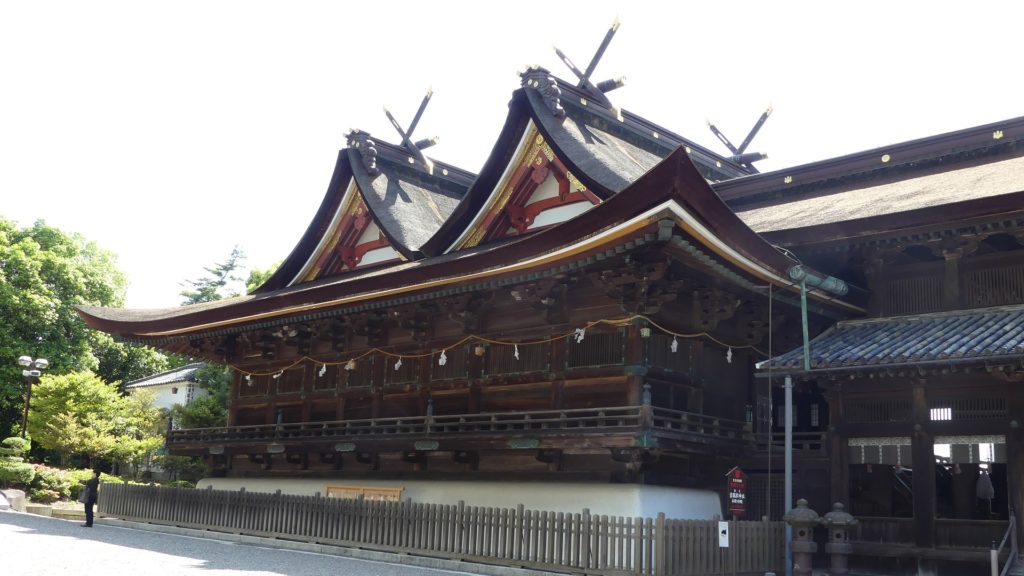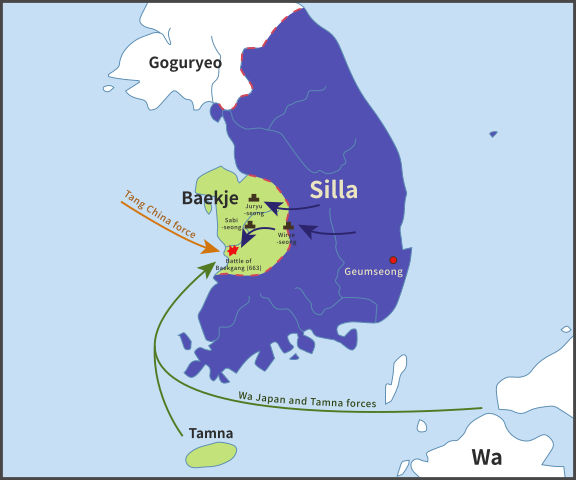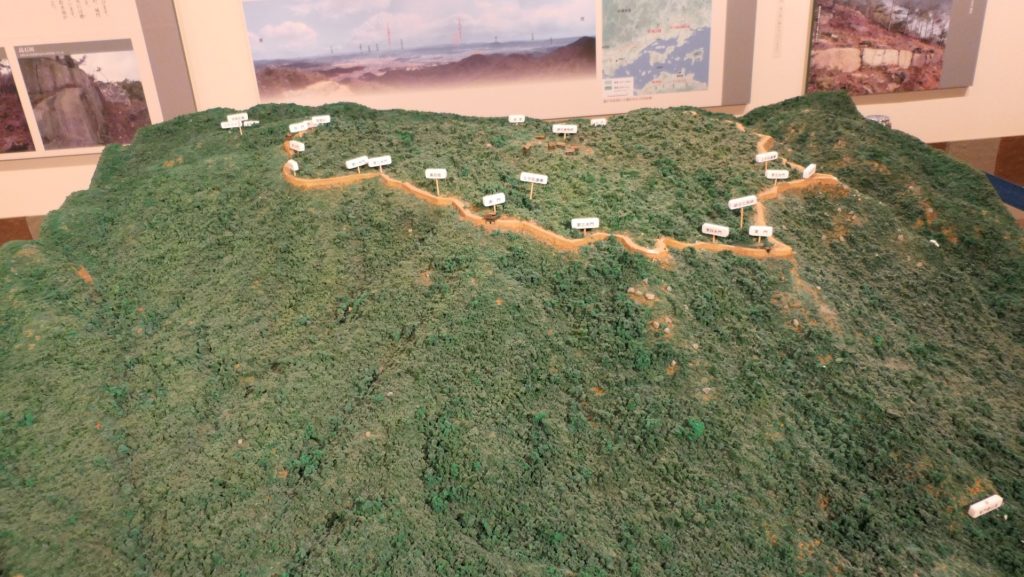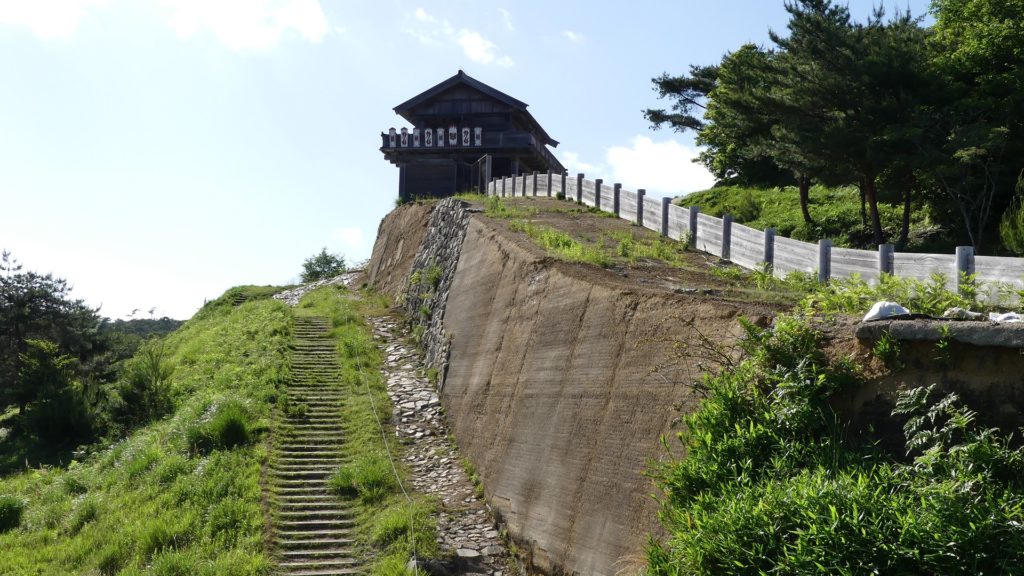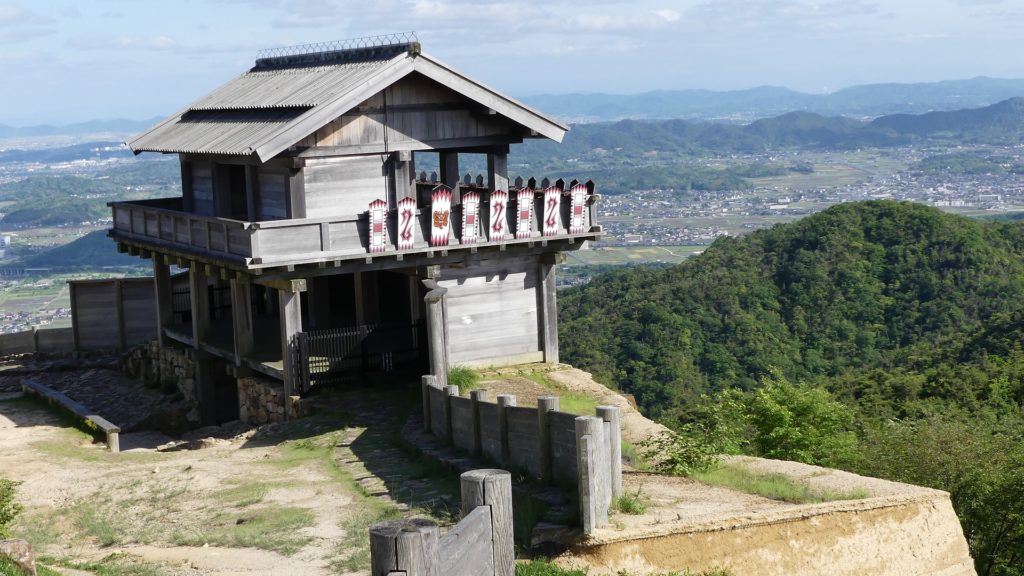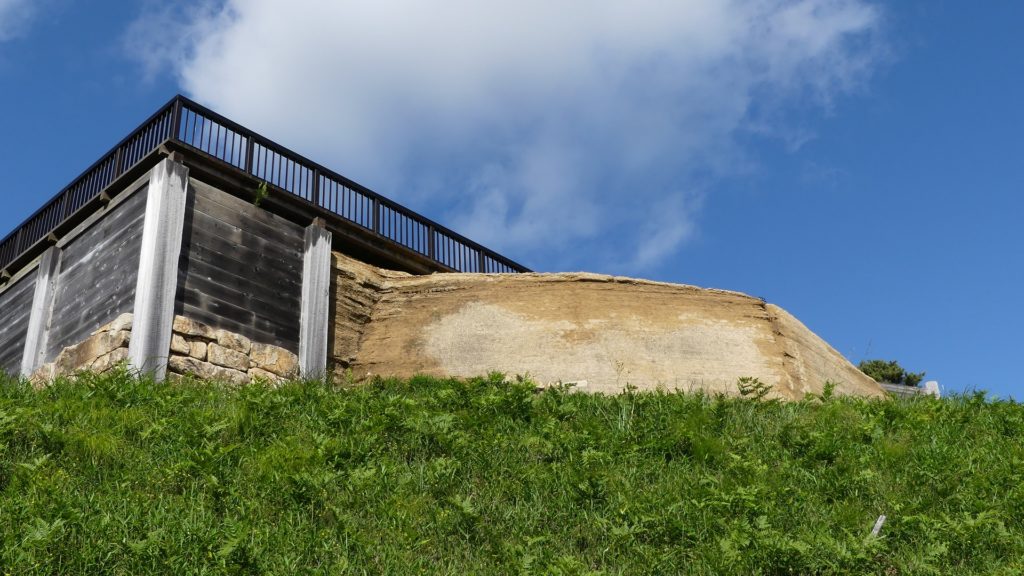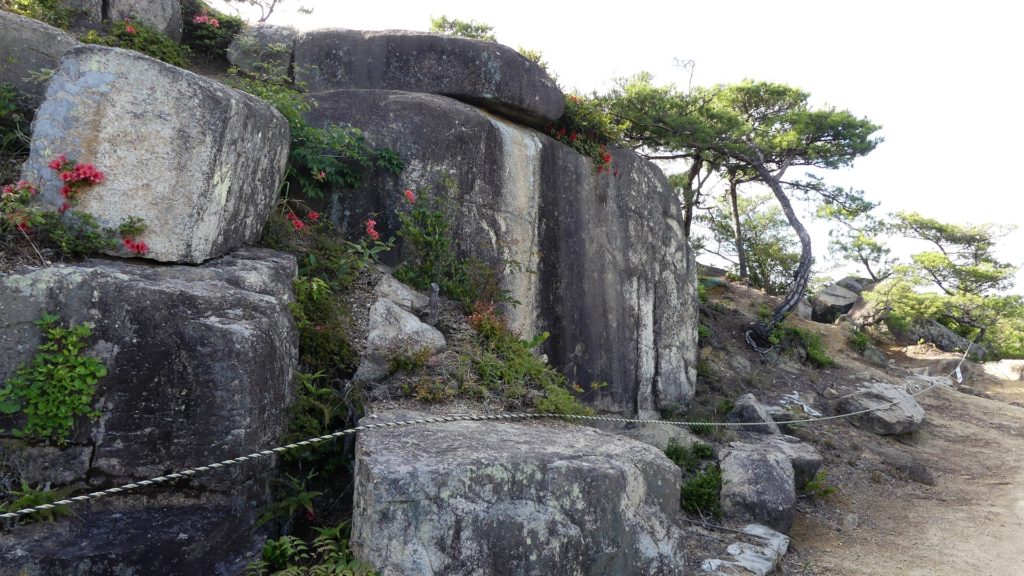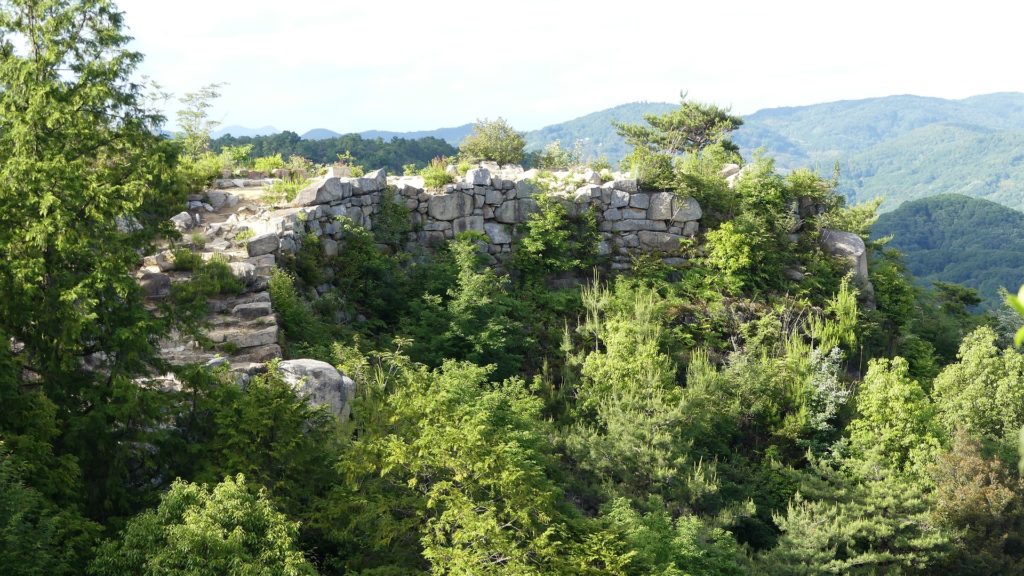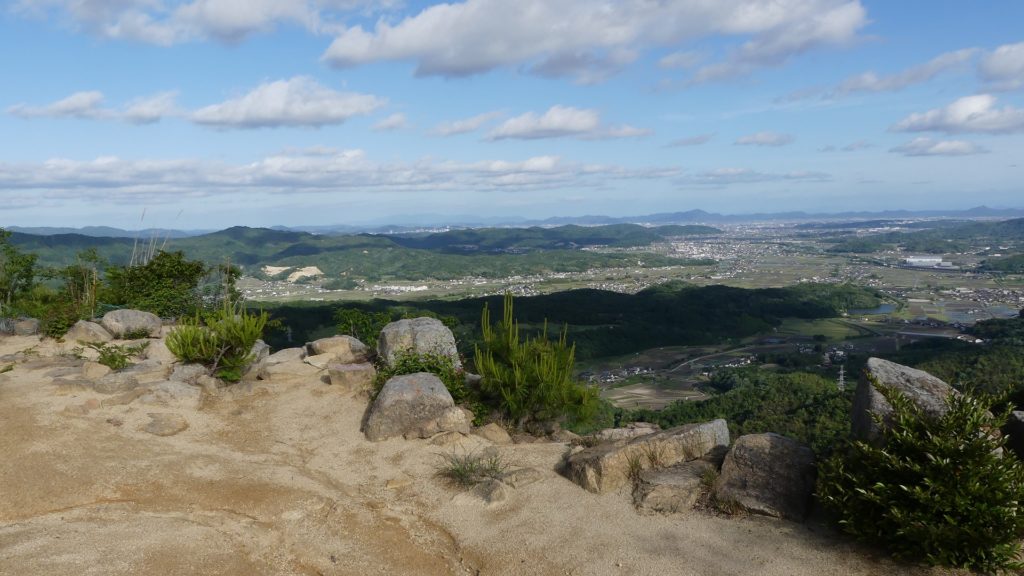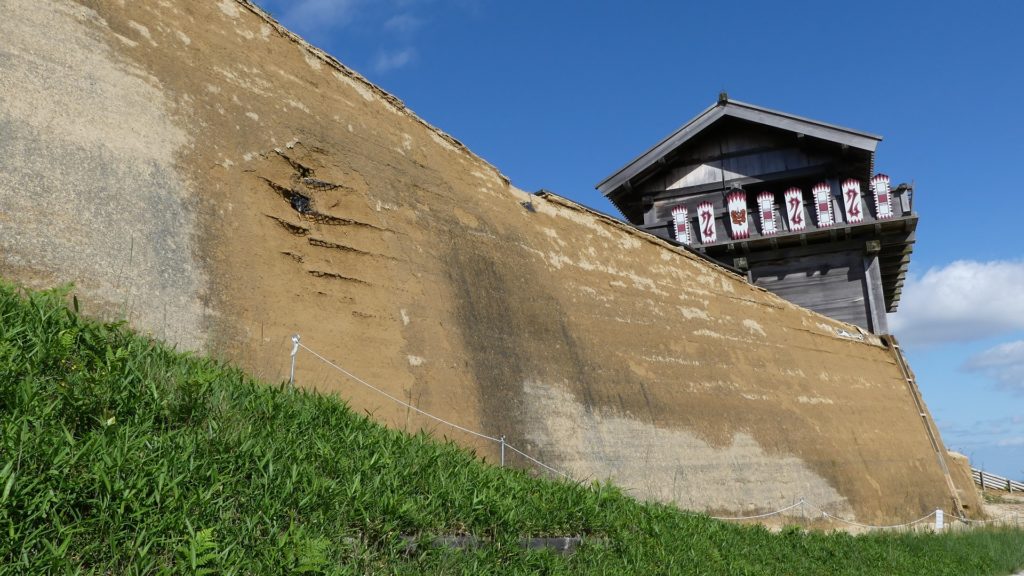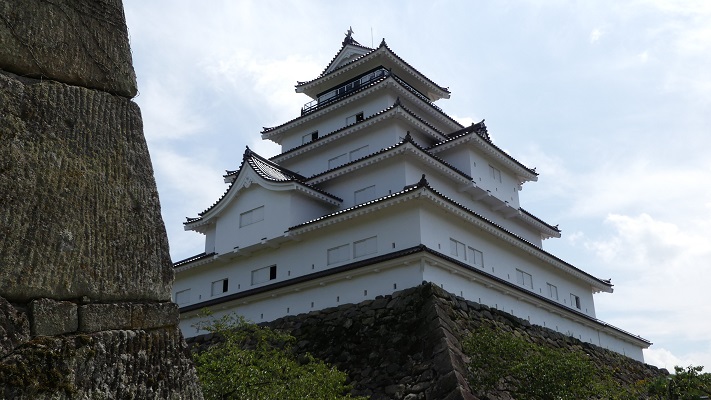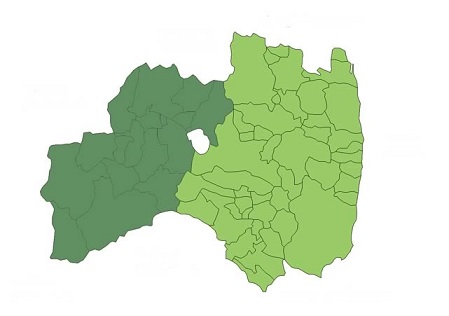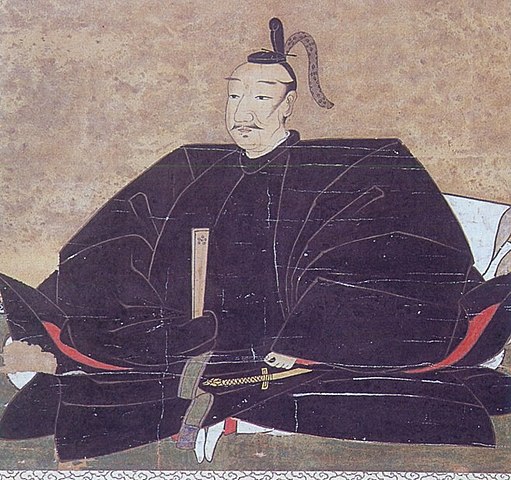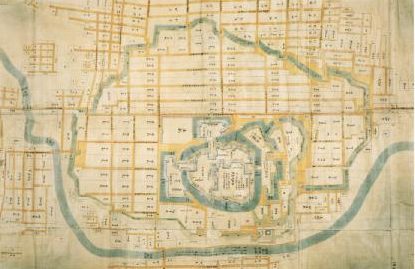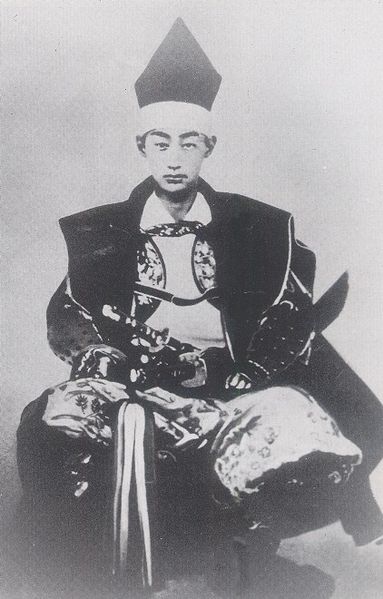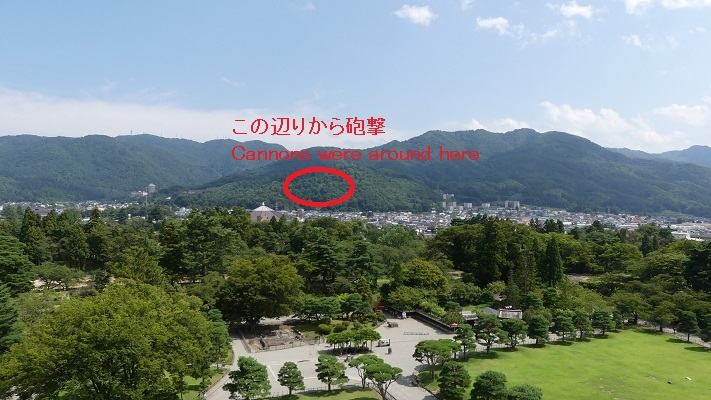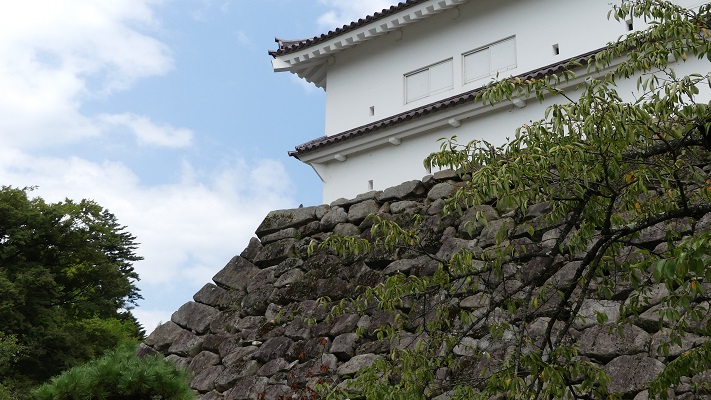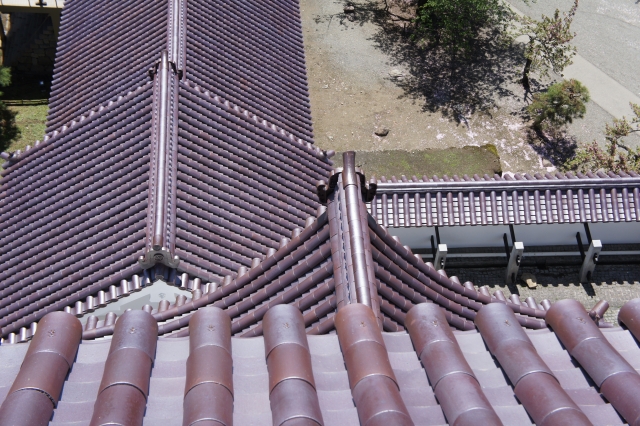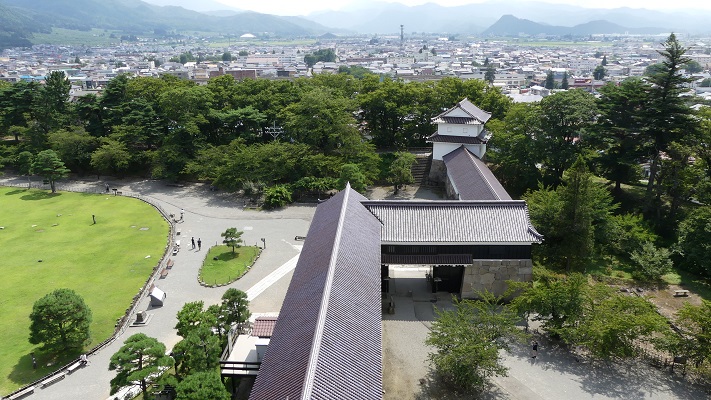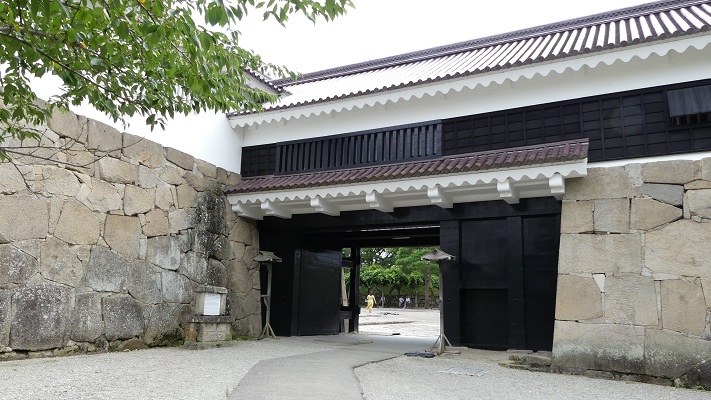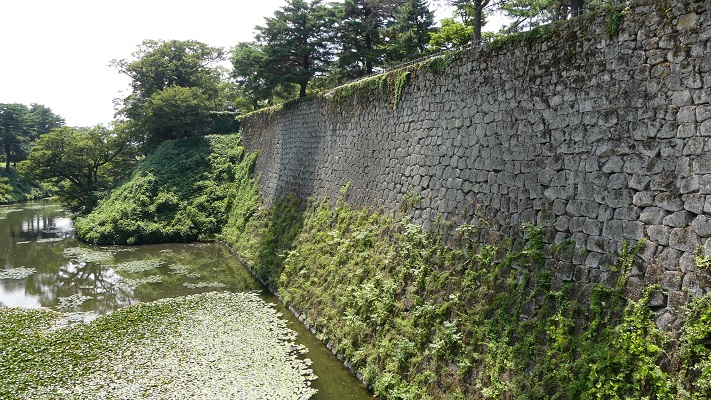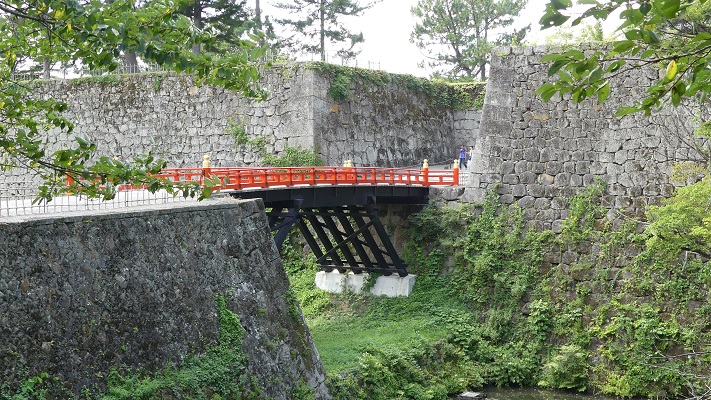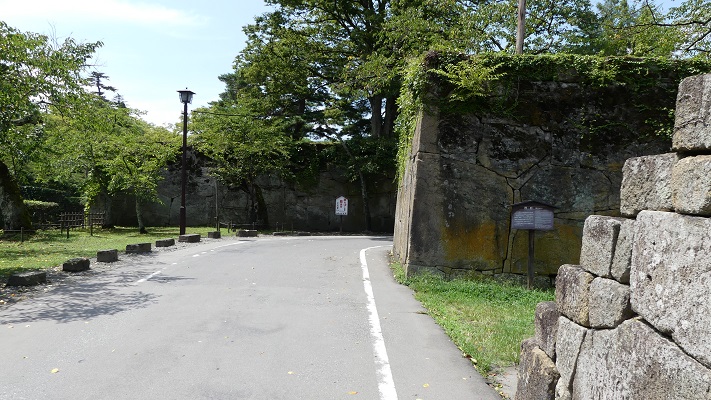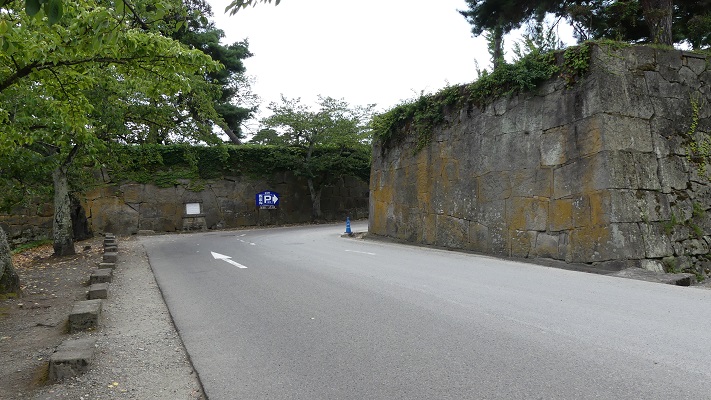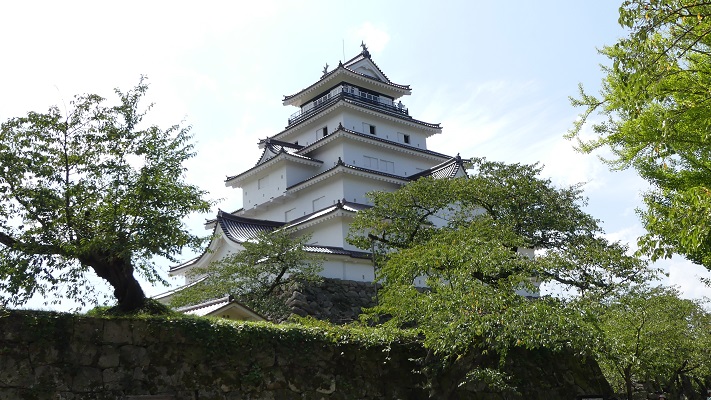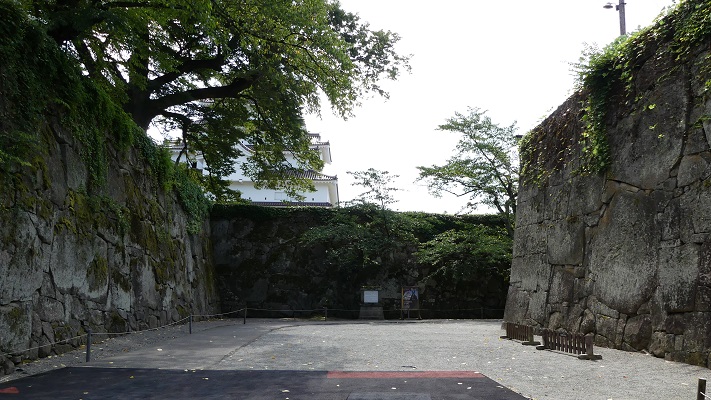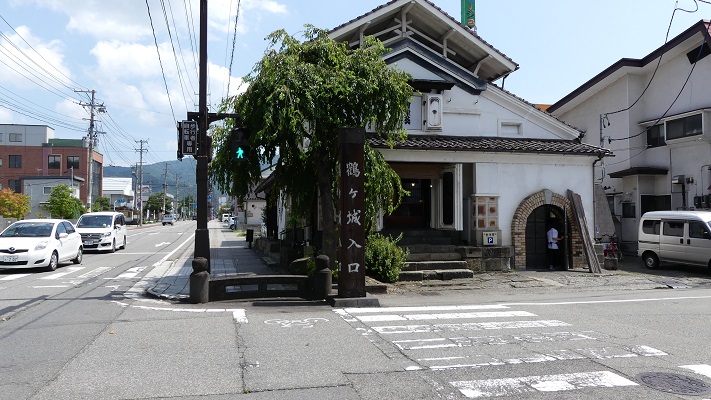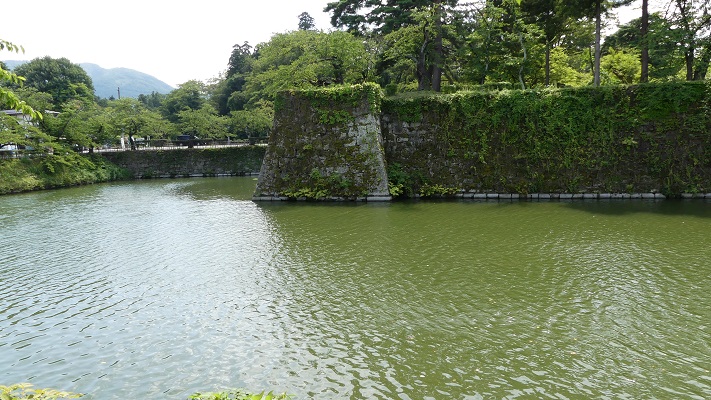立地と歴史~Location and History
繁栄する琉球とグスク~Prospering Ryukyu and Gusuku
14、15世紀ころ、琉球諸島(現在の沖縄諸島)は貿易によって栄えました。当時、中国の明王朝は海外の国との民間貿易を禁じていました。その代わりに、日本(琉球とは違う国とみなされていました)、朝鮮、東南アジア諸国は、琉球を通して中国と交易していました。中国は、琉球が頻繁に朝貢することと、諸国と貿易することを認めたからです。結果的に、琉球には「按司」と呼ばれた有力な豪族が多く現れ、中国や他国と貿易を行い、力をつけていきました。
Around the 14th and 15th centuries, the Ryukyu Islands (what is now Okinawa Islands) prospered thanks to trading. At that time, the Ming Dynasty that governed China banned private trading with foreign countries. Instead, countries like Japan (considered different from Ryukyu), Korea, and South East Asians traded with China through Ryukyu, because China allowed Ryukyu to bring a tribute frequently as well as to trade with them. As a result, many powerful clans in Ryukyu called “Aji” traded with China and other countries, and had great power.

彼らは沖縄諸島一帯に、300以上の大規模な要塞を築き「グスク」と呼ばれました。グスクは城のようでもありましたが、館や礼拝所としても使われたようです。中城城はもっとも大きなグスクの一つであり、グスク跡としてももっともよく保存されているものの一つです。
They built over 300 large-scale fortresses called “Gusuku” around the Ryukyu Islands. They looked like a castles, but they could also be used as a hall or shrine. Nakagusuku Castle was one of the largest Gusuku, and is one of the best preserved Gusuku ruins.
中城城の完成~The completion of Nakagusuku Castle
中城城は最初14世紀中頃に先中城按司によって築かれました。城は、沖縄本島にある標高160mの丘の上にあり、東側は天然の要害として高い崖となっていました。また、わずか2kmのところに、当時は貿易港であった八木港がありました。先中城按司は、一の郭、二の郭、南の郭、西の郭といった主要な曲輪を作りました。15世紀になって琉球王国の重臣であった護佐丸が三の郭、北の郭を加えて城を完成させました。
It is said that Nakagusuku Castle was first built in the mid 14th century by Sachi-Nakagusuku Aji clan. The castle was located on a 160m high hill on Okinawa Island with a high cliff in on the east as natural barrier. It was also only 2 km away from the Yagi Port which was once a trade port. Sachi-Nakagusuku Aji clan built the main parts of the castle, such as the First Enclosure or Ichinokaku ,the Second Enclosure or Ninokaku, the South Enclosure or Minaminokaku, and the West Enclosure or Nishinokaku. In the 15th century, a senior vassal of the Ryukyu Kingdom, Gosamaru completed the castle, adding the Third Enclosure or Sannokaku, and The North Enclosure or Kitanokaku.

護佐丸の乱~Gosamaru Rebellion
護佐丸は、王国に反抗していた勝連城の有力な按司である阿麻和利から王国を守るため、中城城に滞在していました。ところが、護佐丸は阿麻和利によって王国への反逆者として仕立てられてしまいます。護佐丸はそれを知って嘆き悲しみ自ら命を絶ってしまったのです。これは阿麻和利が王国や護佐丸をだましたのだと言われていますが、真相は不明です。その後、阿麻和利も王国により討たれてしまったからです。
Gosamaru stayed at the castle to protect the Ryukyu Kingdom from another powerful Aji called Amawari at Katsuren Castle who was against the Kingdom. However, Gosamaru was considered as a rebel against the Kingdom by Amawari. Gosamaru felt very sad about it, and killed himself. It is said that Amawari deceived the Kingdom and Gosamaru, but the details are uncertain, as Amawari was also defeated by the Kingdom later.
その後、この城は王国の王子の所有となりました。江戸時代に王国が日本の薩摩藩の支配下にあった間は、城は番所として使われていました。
After that, the castle was owned by the Prince of the Kingdom. During the Edo Period, when the Kingdom was under the Satsuma Feudal Domain of Japan, the castle was used as a guardhouse.
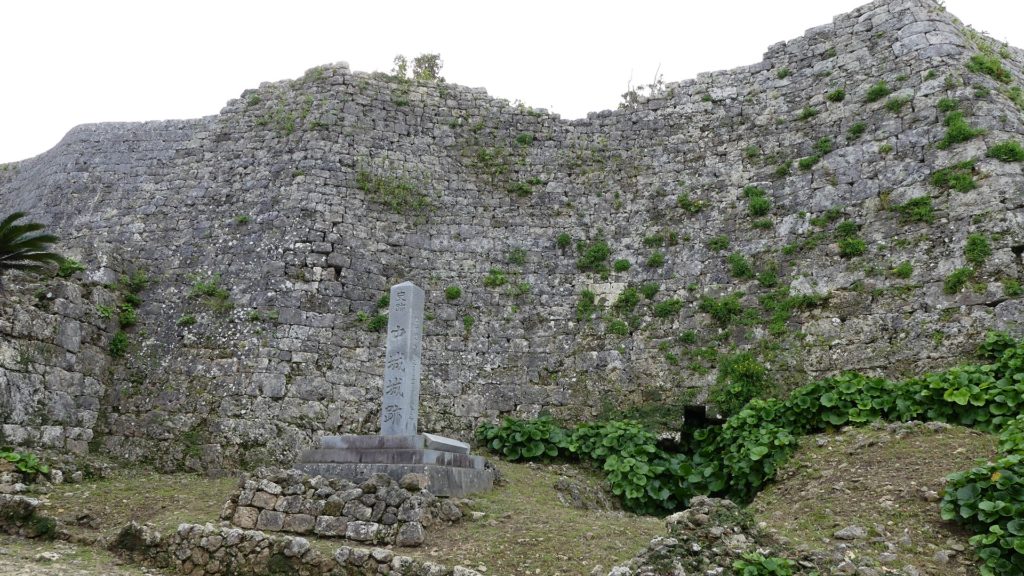
特徴~Features
城周辺の航空写真~The aerial photo of around the castle城跡に入る~Entering the Castle Ruins
現在、中城城跡は今でもとてもよい場所にあると言えます。城跡は島が狭くなっている部分の高い場所にあるので、東は太平洋の、西は東シナ海の素晴らしい景色を見渡すことができます。この城の城主は、敵味方の動きを容易につかめたことでしょう。
Now, the ruins of Nakagusuku Castle still have a very good location. They are located on a high point where the island is narrow, so you can have a great view of the Pacific Ocean on the east and the East China Sea on the west. That meant that a lord of the castle was able to see the movement of his friends and enemies.
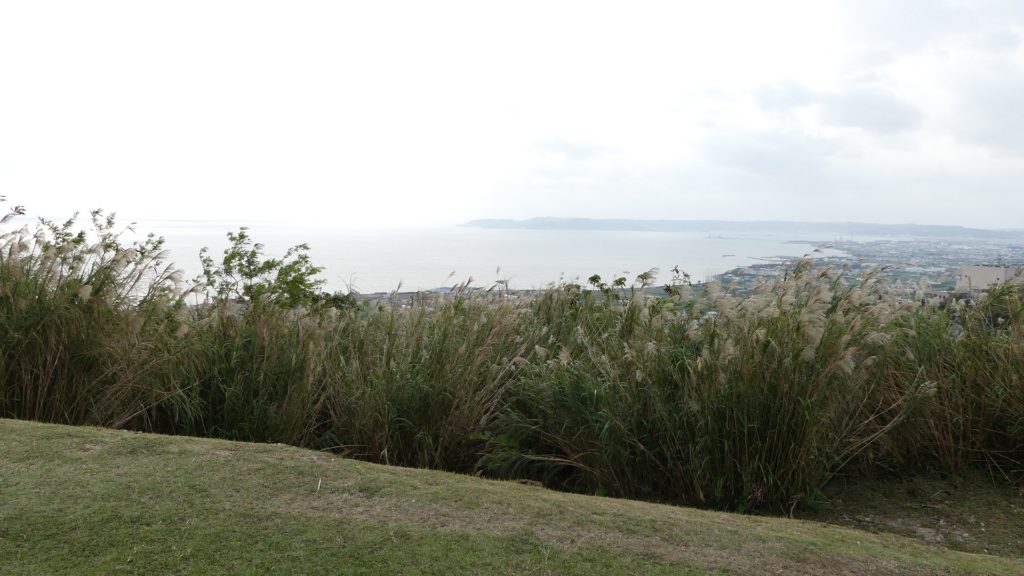
観光客が城跡の入口に入ると、カートで城の正門の近くまで乗せていってもらえます。そこからその門まで登っていきますが、それは西の郭の入口でもあります。この郭は、一の郭と南の郭に隣り合っています。一の郭の素晴らしい高石垣が見えることでしょう。
When visitors enter the entrance of the ruins, they are driven near the front gate of the castle by a cart. You can walk up to the gate which is also the entrance of the West Enclosure. The enclosure is next to the First Enclosure and South Enclosure. You can also see the great high stone walls of First Enclosure.

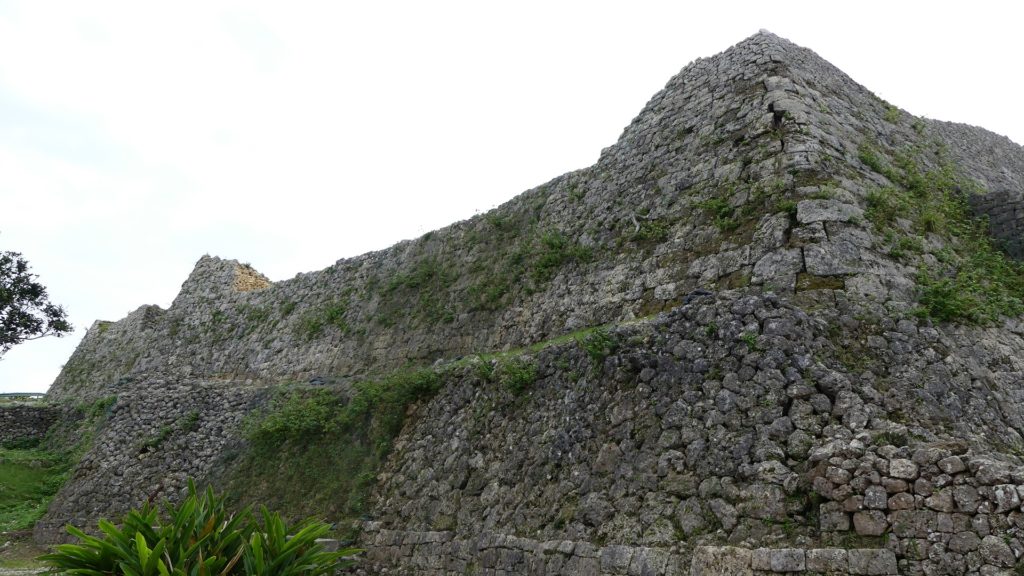
更に南の郭の入口に進みます。この郭は城で最も古い部分と考えられています。その石垣が部分的に自然の石灰岩により積まれていて、「野面積み」と呼ばれる原始的な方式によるからです。この郭には3箇所の拝所跡があり、例えばその一つでは雨乞いを祈願していました。
You can go further to the entrance of South Enclosure. The enclosure is thought to be the oldest part, because its stone walls were partly piled with natural lime stones, a primitive method called “Nozura-zumi”. There are three places for worship in ruins in the enclosure, such as one where you could pray for rain.


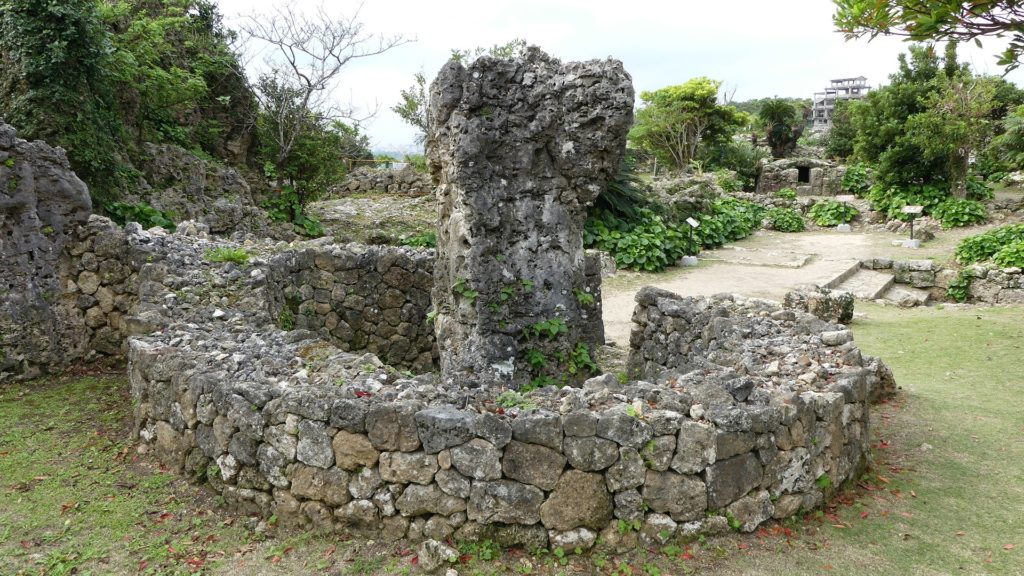
素晴らしい石垣と景色~Wonderful Stone Walls and Views
南の郭から、アーチ型の門を通って一の郭に進みます。この門は護佐丸がこの城を拡張したときに作ったと言われています。一の郭は、この城の中心であり、最も大きい郭です。ここには正殿がありました。ここの石垣は、四角く加工した石灰岩により築かれており、「布積み」と呼ばれます。この方式は南の郭のものより進歩しており、このため一の郭は南の郭より後に作られたようです。また、石垣の上には展望台があり、太平洋の絶景を見渡すことができます。二の郭がまた隣りにあります。その郭の石垣の輪郭はとても美しいです。
From the South Enclosure, you can go to the First Enclosure through the arch entrance gate. It is said that Gosamaru had this arch shaped when he improved the castle. The First Enclosure is the main and largest enclosure of the castle. There was the main hall in it. Its stone walls were built with processed square lime stones, a method called “Nuno-zumi”. The method is more developed than the South Enclosure’s, so the First Enclosure seemed to have been built after the South Enclosure. There is also the observation deck on the stone walls where you can have a great view of the Pacific Ocean. The Second Enclosure is the next one. The shape of this enclosure’s stone walls is very beautiful.
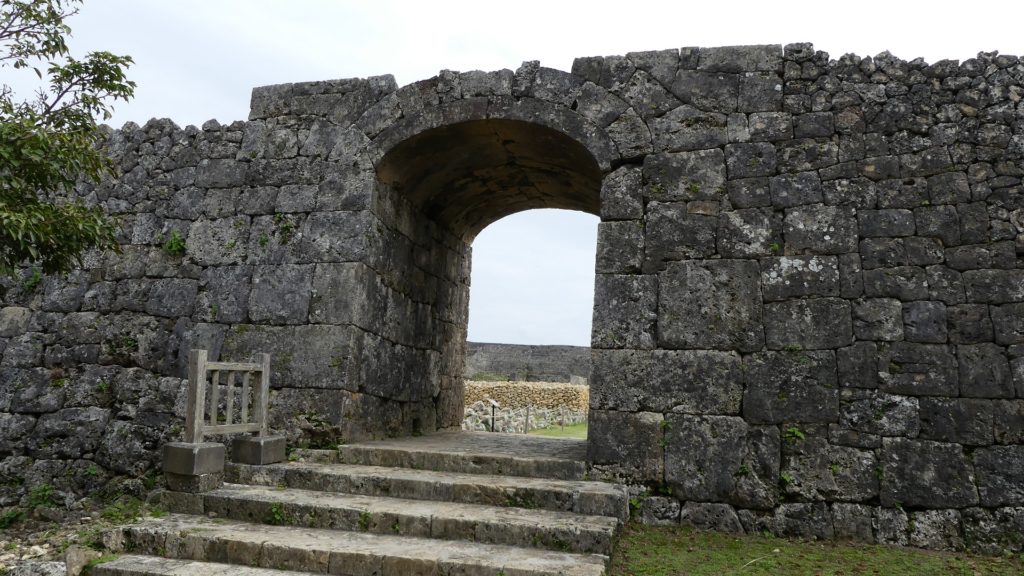
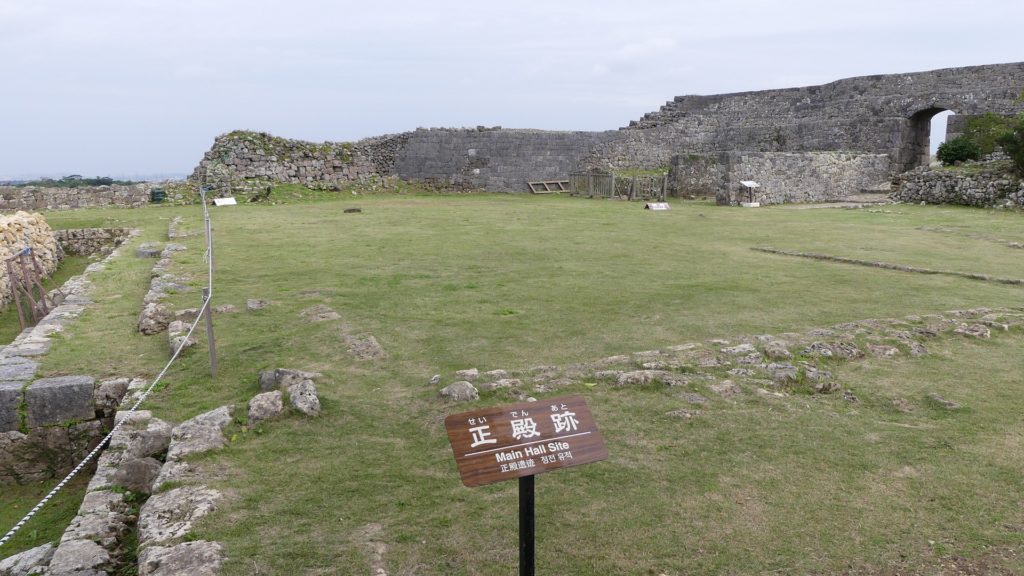

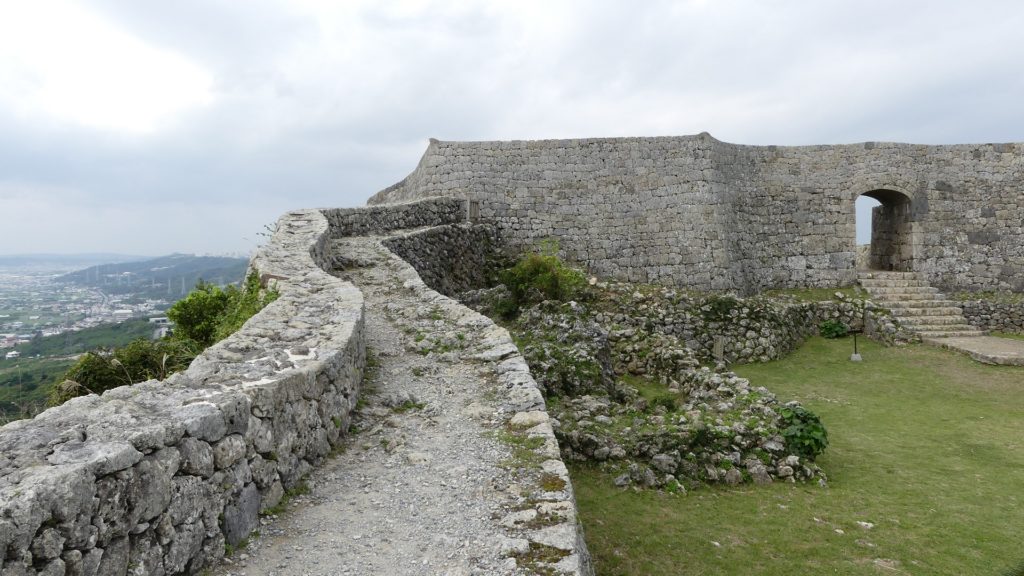
護佐丸の貢献~Work of Gosamaru
護佐丸が後から追加した北の郭に行くには、一旦西の郭に戻る必要があります。北の郭には「ウフガー」と呼ばれる井戸の跡があります。それまでは城の内部には井戸がなかったので、これも護佐丸により築かれました。
You need to go back to the West Enclosure to go to the North Enclosure which was added by Gosamaru later. The North enclosure has the ruins of a well called “Ufugaa”. The well was also built by him, as the castle didn’t have no well inside.

最後の三の郭には北の郭から向かいます。この郭は最も新しい郭で、アーチ型の裏門があり、護佐丸が築きました。北の郭と三の郭の石垣は、「相方積み」といわれる方式で作られています。この方式は加工した石灰岩をランダムに、しかし強固に積んでいくもので、この城では最も進化した複雑なものです。それでこれらの郭が最新とわかるのです。
You can walk from the North Enclosure to the Third Enclosure, the last one. The enclosure is also the newest one with the arch shaped back gate that Gosamaru built. The North and Third Enclosures have stone walls built in the method called “Aikata-zumi”. This method refers to piling randomly processed lime stones solidly. It is the most advanced and complex way in the castle, so we can see these enclosures are the newest.

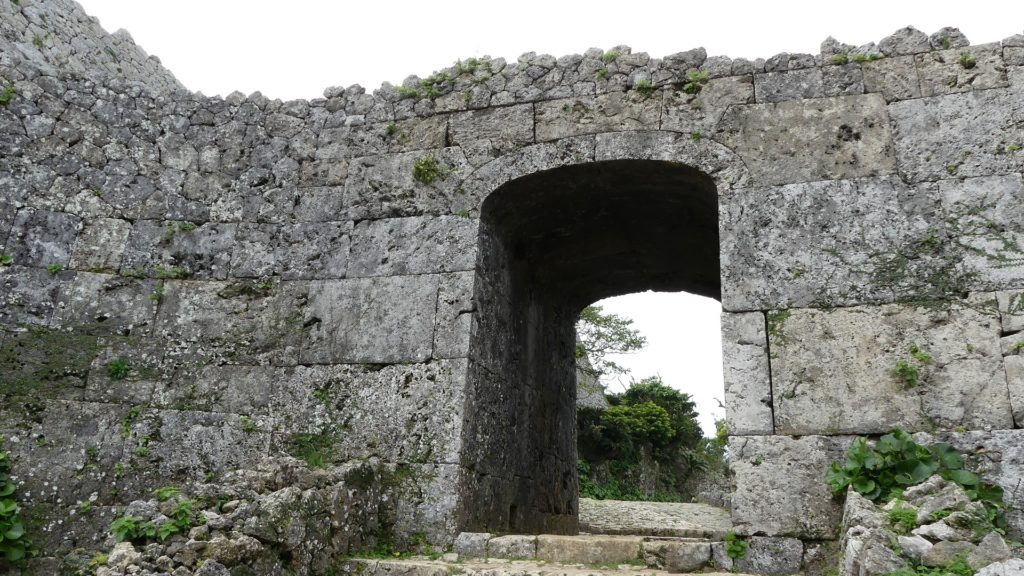

その後~Later History
明治維新後、日本政府により琉球王国は廃止され、日本の一つの県になりました。城は中城村の役場として使われていました。第二次世界大戦で焼けてしまうまでは何らかの建物が残っていたようです。更には、日本陸軍が城に駐在し、陣地を作り始めました。ところが、その後すぐ命令により他に移っていきました。そのために石垣や土台など城の遺跡が現在までよく保存され残っているのです。この遺跡は2000年に琉球王国のグスク及び関連遺産群として世界遺産に登録されています。
After the Meiji Restoration, the Ryukyu Kingdom was abolished, as it was taken in as one of Japan’s prefectures by the Japanese Government. The castle was used as the village office of Nakagusuku Village. Some buildings seemed to remain until they were burned during World War II. In addition, the Japanese Army once stayed at the castle and started to build a position. However, they were ordered to moved to another soon after. That’s why the ruins of castle (stone walls, foundation etc) remain well preserved until today. They have been on the World Heritage List as Gusuku Sites and Related Properties of the Kingdom of Ryukyu since 2000.
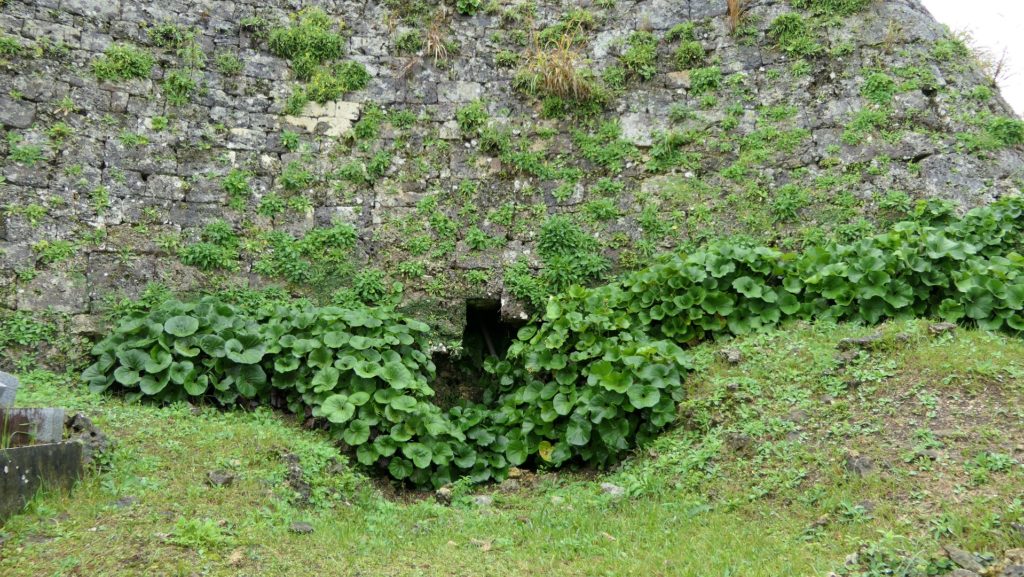
私の感想~My Impression
日本の本土では、石垣造りの城が一般化するのは16世紀のことです。戦での鉄砲の使用への対応と、建築技術の向上が要因であると言われています。沖縄では、石垣造りの城が本土より2世紀も早く出現しました。その理由の一つは、石灰岩が加工しやすいこともあったでしょう。もちろん戦いのための城であるからには、より強力な城にする必要もありました。更にもう一つの理由は、グスクの城主たちは彼らの権威や信仰を表したかったのだと思います。それでこんなにも美しく見えるのでしょう。
In Japan mainland, castles with stone walls became popular in the 16th century. It is said that the needs for wars using guns and developing construction technology caused that change. In Okinawa Island, castles with stone walls appeared two centuries earlier than on the mainland. One of the reasons for that was that lime stones were easier to process. Of course, the castles were used for a battle. Stronger castles were another reason. I think that another reasons was the lords of the “Gusuku” castles wanted to show their authority and faith, so that’s why they look very beautiful.
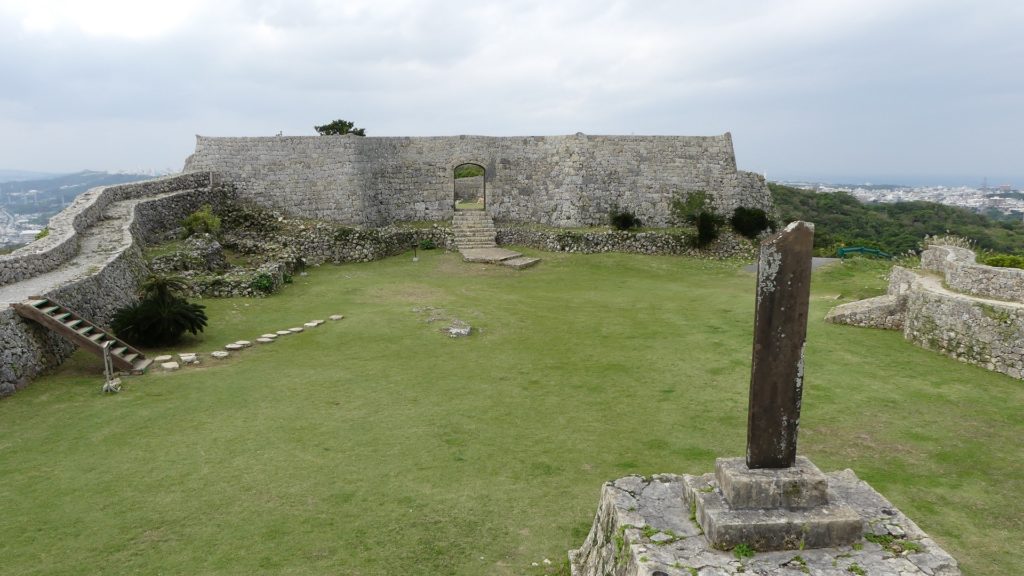
ここに行くには~How to get There
ここに行くには、車を使うことをお勧めします。
那覇空港から:
車の場合、那覇空港自動車道に名嘉地ICから入り、西原JCTで沖縄自動車道に合流し、北中城ICで降りてください。城跡はそこから5km以内で、駐車場もあります。
I recommend you to visit it by car.
From the Naha Airport:
By car, enter Naha Airport Expressway at the Nakachi IC, join Okinawa Expressway at the Nishihara JCT, and get off the expressway at Kita-Nakagusuku IC. The ruins are within 5 km from the IC, and offers a parking lot.
リンク、参考情報~Links and References
・沖縄の世界遺産、中城城跡~Nakagusuku-jo site, World Heritage of Okinawa
・「琉球王国、東アジアのコーナーストーン/赤嶺守著」講談社(Japanese Book)
・「列島縦断「幻の名城」を訪ねて/山名美和子著」集英社新書(Japanese Book)

